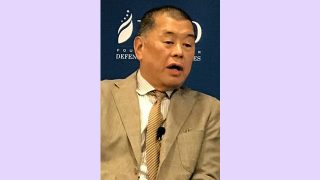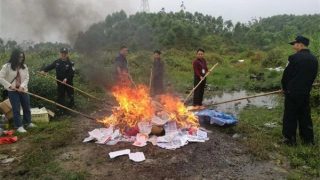he critical needs of 1.2 million mostly Rohingya refugees in south-eastern Bangladesh were top of the agenda for a fact-finding mission to the region by three senior United Nations officials, who called for continuing support on Friday for them from the international community.
At the end of a joint visit to the country, UN Emergency Relief Coordinator Mark Lowcock, head of UN migration agency (IOM) António Vitorino, and UN High Commissioner for Refugees (UNHCR), Filippo Grandi, reiterated their commitment to find safe and sustainable solutions for Rohingya refugees in Bangladesh, as well as helping them to make a safe and dignified return home.
Since August 2017, nearly 900,000 minority Muslim Rohingyas have fled violence across the border into Bangladesh’s Cox’s Bazar region, joining several hundred thousand others that had already settled there in overcrowded camps.
Mr. Lowcock painted a picture of “the most appalling brutality imaginable” during his first visit in 2017, when he “met with children who had seen parents killed” and women who, “just holding on”, recounted “horrendous stories of sexual violence they had survived”.
After visiting Cox’s Bazar this trip they noted that almost half of the 540,000 refugee children under the age of 12 are missing out completely on an education, while the remainder are only able to access very limited schooling. Moreover, just a handful of teenagers are currently able to access any form of education or training.
“With the current crisis almost two years on, we must give refugees the chance to learn, build skills and contribute to their communities while also preparing for reintegration when they can return to Myanmar,” said Mr. Grandi. “The future of the Rohingya refugees hangs in the balance.”
The visit came just prior to the onset of cyclone season, which is followed by the arrival of monsoons, both posing serious risks of flooding, landslides and disease outbreaks to thousands of vulnerable women, men and children.
“We are concerned for the welfare of the Rohingya refugees who live in such vulnerable circumstances in Cox’s Bazar, as well as for host communities which also face significant challenges, particularly in the lead up to the monsoon season,” said António Vitorino.
The UN leaders discussed with the Government ways that the international community can further support preparedness and response efforts.
“The Rohingya community is made up of so many young people who are in need of hope and opportunities if they are to build successful lives upon their return to Myanmar”, Mr. Vitorino added.
They also met families undergoing a joint Government-UNHCR registration process, receiving documents that for many are a first to confirm their identity in Bangladesh and enhance their rights to access services and protection.
“This remains one of the world’s biggest refugee crises,” maintained Mr. Grandi. “I saw a great deal of progress, but their situation, especially for women and children, remains fragile”.
While in the camps, they assessed ongoing work to address weather-related risks, including strengthening shelters, improving infrastructure, and training volunteers while recognizing the critical role the refugees themselves are playing in these efforts.
“A wise, far-sighted approach would see a stronger focus on helping the refugees not just recover from the horrors they have experienced, but also to prepare for a dignified longer-term future,” concluded Mr. Lowcock.
source:UN



